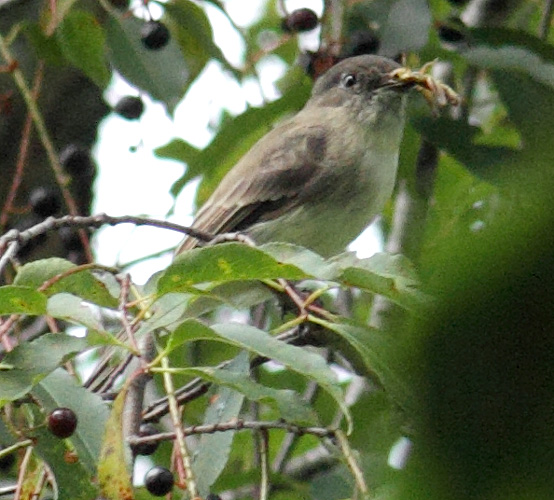
Eastern Phoebe
There was light rain almost all morning, but the radar showed a couple of hour break starting around 11:00 a.m, so I headed to the trail and stayed there for two hours. I ended up with 26 avian species, mostly, but not all, common, late summer birds. There was a lot of avian activity, mostly during the first hour when the birds came out to forage after the rain ended.

Eastern Phoebe
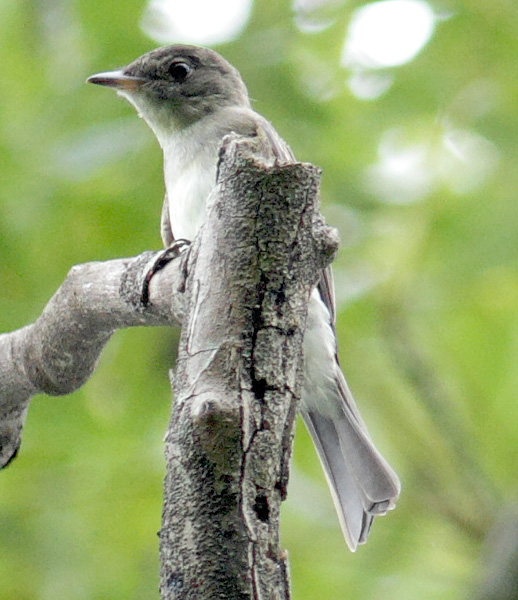
Eastern Wood-Pewee

Scarlet Tanager
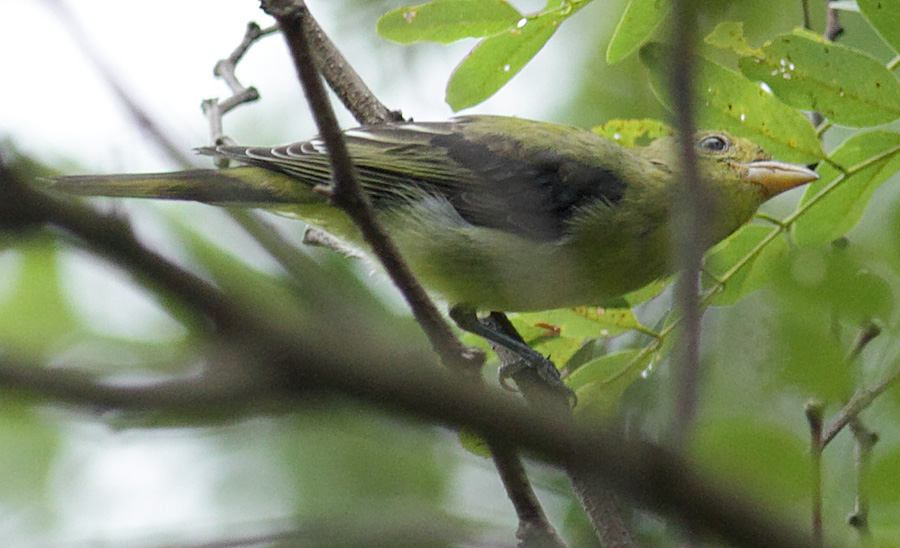
Scarlet Tanager
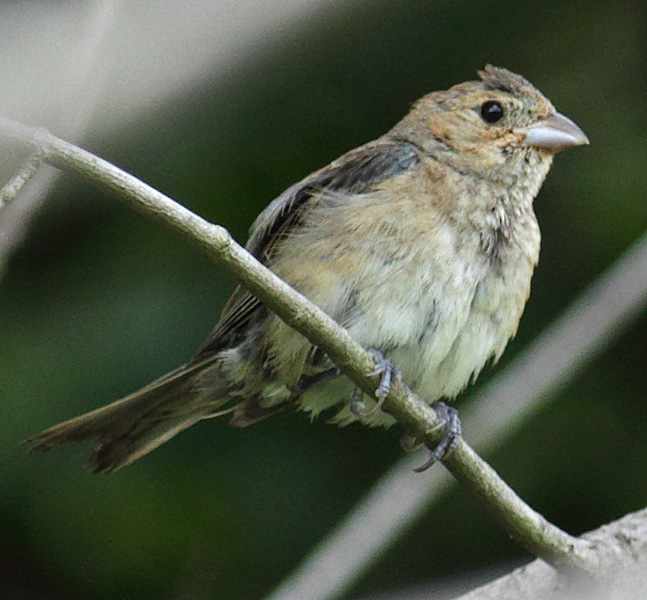
Indigo Bunting
I saw a male Common Yellowthroat, and then saw a small bird that must have been a very young Common Yellowthroat. The young bird had only a small patch of yellow on its breast, and white edges to a few of its feathers. It was foraging with the adult Common Yellowthroat.

Common Yellowthroat
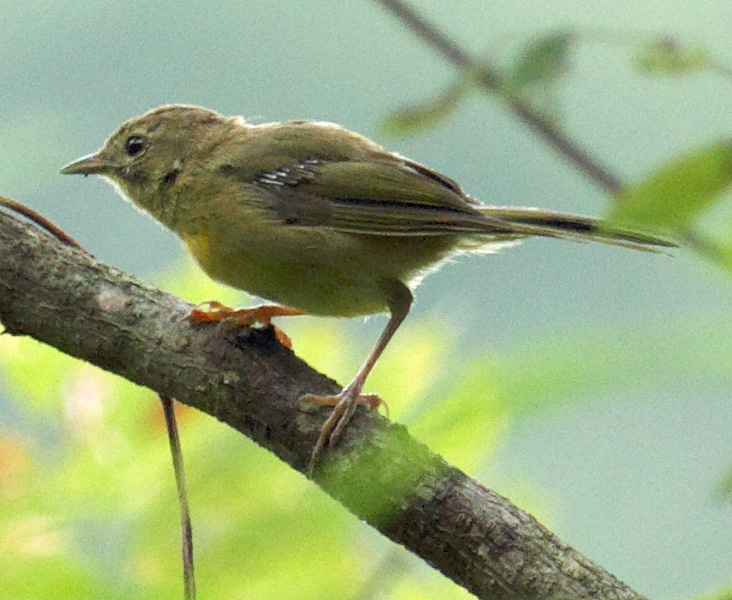
Common Yellowthroat
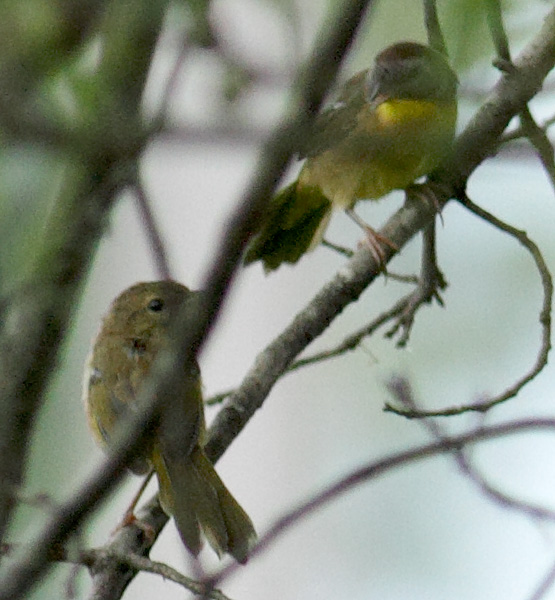
Common Yellowthroats
Near the end of my hike, as I was heading back to my car, I photographed a warbler at 12:40 p.m. on the downstream trail just east of the picnic table. It was in the brush on the far side of the Rockfish River, and quickly flew into hiding when it saw me. This warbler was either a Mourning or a MacGillivray's. These two species are almost identical, with Mourning as a rare eastern species, and MacGillivray's a rare western species. I researched my warbler books, and it seems to have more characteristics of a MacGillivray's than that of a Mourning, especially its thick eye arcs, dark lores that appear to join across the bill, and vertical dark breast streaks. The only photo of tail length has a foreshortened view, so tail length is difficult to measure. A MacGillivray's would be very rare here, but one was seen last year farther north in the eastern US, and one was seen in Virginia in 2005. I have heard from a few birders who have seen both species, and all of them think that this warbler is more likely to be a Mourning Warbler.

MacGillivray's/Mourning Warbler
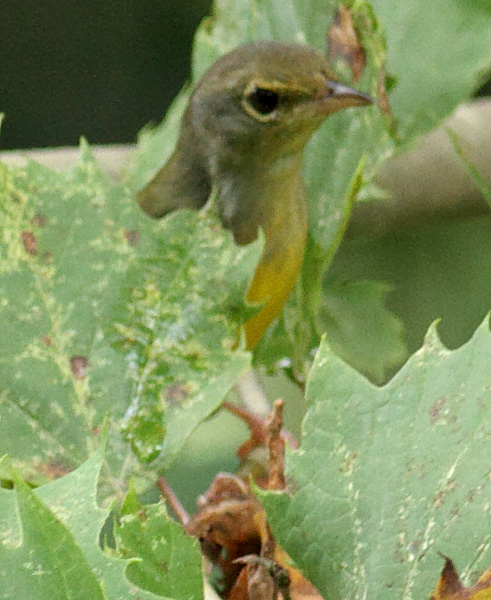
MacGillivray's/Mourning Warbler

MacGillivray's/Mourning Warbler
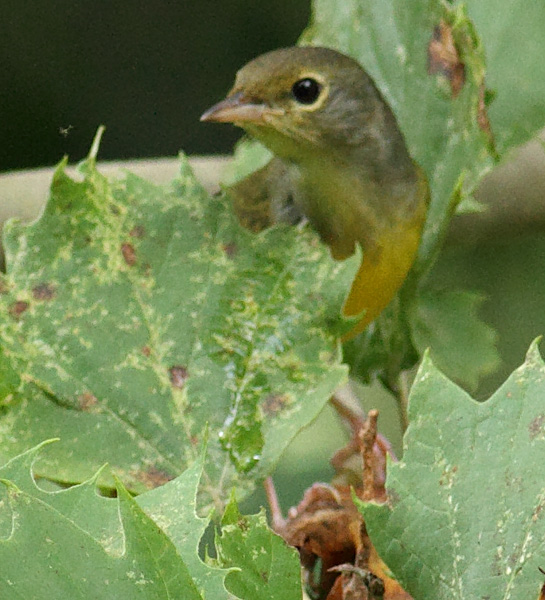
MacGillivray's/Mourning Warbler
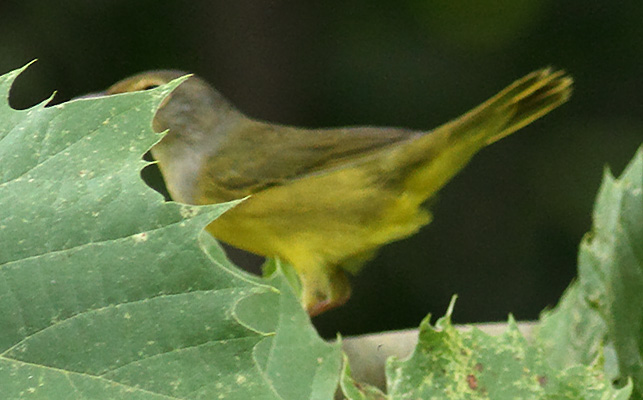
MacGillivray's/Mourning Warbler